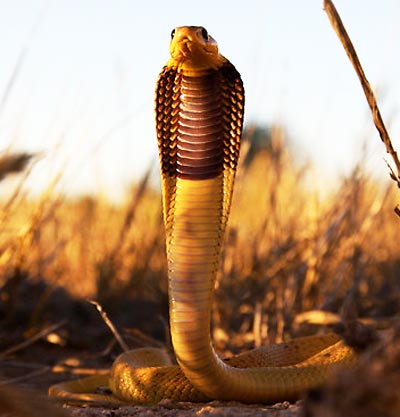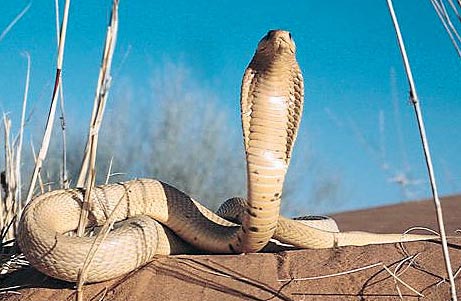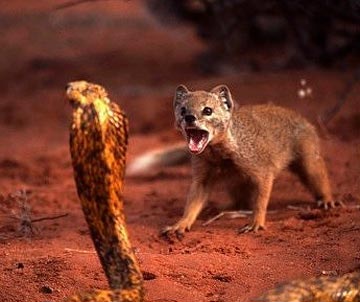Cape Cobra – Yellow and Deadly from Southern Africa

The cape cobra is found in the dry, semi-desert regions of southern Africa, particularly in the Northern Cape in South Africa and in parts of Botswana. In the Kalahari region, it is a yellowish color, with uniform brown speckles. It is a medium-sized snake, with adults measuring between 120cm (46.8 in) and 180cm (70.2 in).
Climbs Trees
The cape cobra is diurnal and its diet consists of reptiles (including other snakes), rodents and birds. It is very good at climbing trees with low overhanging branches, and it is known to raid the nests of weaver birds. The snake makes use of a neurotoxin that targets the respiratory system. If the cape cobra bites an adult human, there is a 60 percent chance of death if no antivenom is available. Bite victims die from respiratory failure, due to the onset of paralysis from the venom. Large amounts of antivenom is needed to treat a bite. Because this cobra has the most powerful venom out of all African cobras, it has the highest rate of fatalities.

The cape cobra is not normally an aggressive, confrontational snake, but will fight if it is threatened and has no clear escape route. The snakes are also quite nervous, so the best thing to do, is to remain calm and make no sudden moves if you encounter one.
Beware the Hood
The cape cobra is not a spitting snake, and when it feels threatened, it will hold its front section erect and spread its hood, making its head and neck appear bigger. Their main predators are raptors and the mongoose, or regional variant, the meerkat. These two animals are sworn enemies and have spectacularly fast, fatal battles. Typically, a group of around three meerkats will take on a cape cobra if the snake ventures into their burrows or territory. The honey badger, or ratel is another predator that the snake has to deal with.

mongoose and speckled cape cobra
Reproduction
Females lay between eight and twenty eggs in a burrow. They are active all year around and do not hibernate. The regions they live in can be cold at night, but even in winter, the majority of the days are warm.
